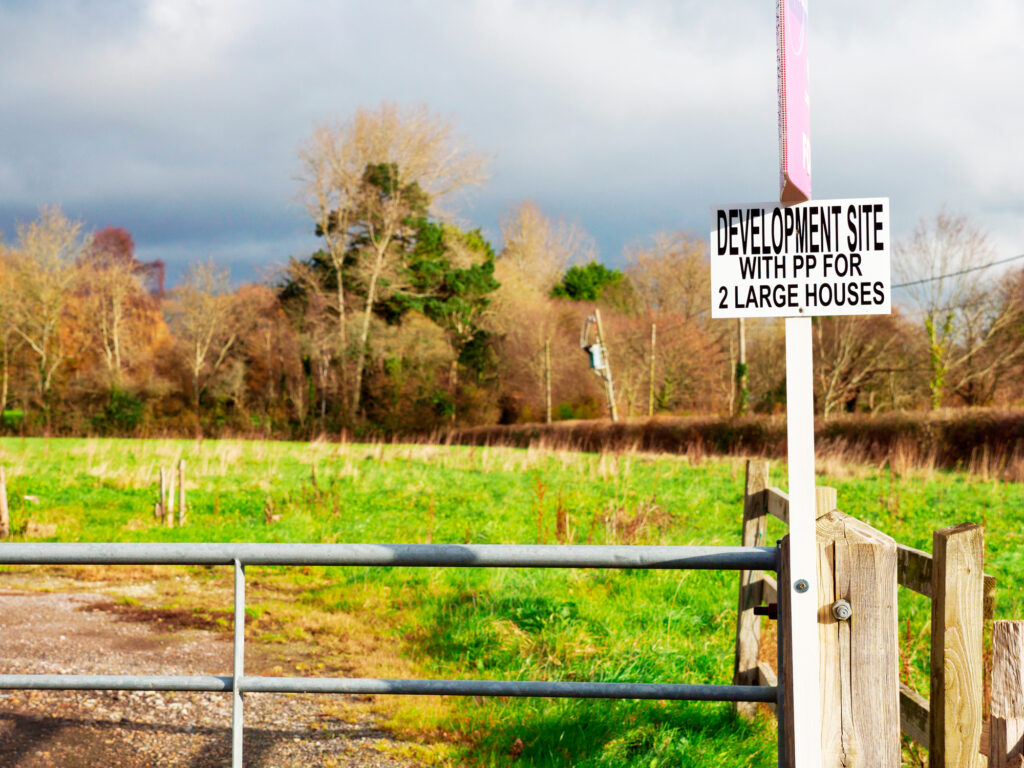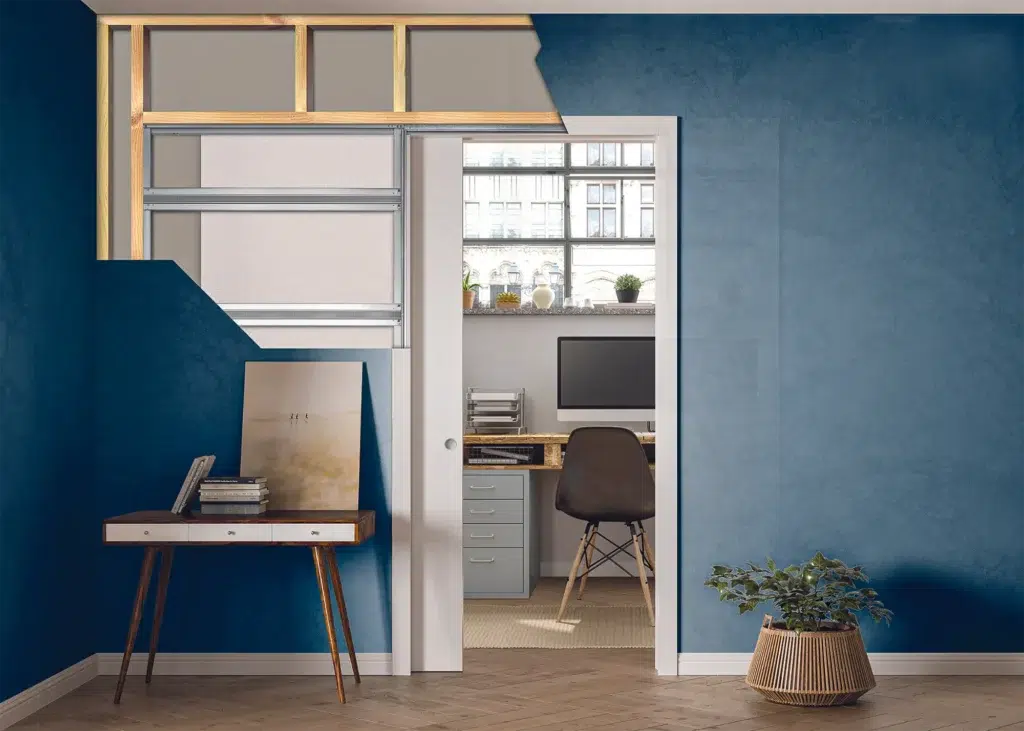
Use code BUILD for 20% off
Book here!
Use code BUILD for 20% off
Book here!Looking for internal doors but not sure where to start? The styles you plump for can have a major impact on the look and feel of your home. But there’s a lot to consider, from the way your internal doors are constructed and hung, to the finish and ironmongery.
Urban Front co-founder and designer, Elizabeth Assaf, advises having internal doors only where you need them. “It’s so easy to have unnecessary doors in a new home,” she says. “Concentrate on designing your home so that the entrances you want to be visible make a statement. All other doors should dissolve into the background.”
With so many options available, it’s important to do your homework. Here’s a rundown on what to look out for when choosing internal doors for your home.
Whether you like high gloss modern finishes or rustic timber textures, your material choice should be largely informed by your home’s overall aesthetic. A traditional countryside home with exposed beams and a flagstone floor probably won’t suit minimalist glass doors, but would look lovely with the addition of characterful timber options.
Of course, wood is a popular material choice for internal doors and you can find these in styles to suit virtually every scheme. “For contemporary interiors, many of our clients want the units to disappear into the walls, so they opt for doors with no frame or architrave,” says Elizabeth. “If you’re going more traditional, an oak panel design with ornate handles often works well in these scenarios.”
More Essential Advice: Front Doors: Design Options, Materials and Costs

Use your internal doors to make a wow factor statement. The contemporary design of this door from Urban Front adds architectural panache
Glass doors can look stunning, owing to their ability to bring a feeling of light and openness, but this quality also comes with a down side.
There are also door styles to weigh up. Simple flush designs, rustic cottage looks and panelled models are among the options widely available off the shelf. Industrial aesthetics are also popular. “Internal doors can often be a last-minute thought when redecorating but offer a great way to transform the look and feel of a room,” says Chris Moorhouse, Wickes category director for timber, building, decor and garden.
The construction of internal doors has a major bearing on performance and price. At the high end are solid wood doors, which, as the name suggests, are made of natural timber throughout. Solid core or semi-solid core doors are the middle ground and typically have a dense, engineered centre to provide exceptional stability. At the other end of the spectrum are hollow core products, which tend to have a lightweight material inside and don’t feel as solid to use.
Simon Johnson, sales director at JB Kind, explains: “Like all products, the materials used within a door’s construction determine the price. A solid core door will cost more than a standard (hollow) core door, as more material is required.”
Major DIY stores have a wide range of interior door styles suiting different budgets. For instance, prices can start from as little as £36 for a white cottage-style door and range up to over £900 for a luxurious black-primed and glazed modern design. “Additional door styles to choose from include oak veneer, white primed, space saving bifold, French doors, glazed and fire doors, meaning there is something for every home,” says Chris from Wickes.
Calculating how much to spend on each element of your self build project? Read our expert guide on 10 Ways to Maximise Your Self Build Budget

You’re likely to need more doors upstairs than downstairs. Shown here is the Belton door from JB Kind. Its single-panel design adds a modern touch to a classic look
Think about your internal door’s finishes, too. Wow-factor hardwood designs stand at the premium end of the market. For instance, Urban Front’s internal door sets start from £6,120 (including VAT) for a European oak finish at 1,000mm x 2,100mm. If you want style on a lower budget, consider laminates and natural veneers (the latter being slightly more expensive).
Prices start at around £150 for JB Kind’s Tigris laminate door with a light grey coloured wood effect. Meanwhile, you’re looking at £180+ for a Tigris real oak veneered internal door and around £255 for a walnut veneered door from the same range (including VAT). “A primed door is a good option if you are on a budget, but as they are not finished, you still have to factor in the cost of painting or varnishing the doors,” says Simon.
Floor-to-ceiling doors can provide a dramatic twist. “Standard sizes are usually what most clients look for to keep costs down,” says Elizabeth. “Full height doors that reach to the ceiling are very popular nowadays but this increases the cost.”
Of course, there are ways to be canny with your budget. “Consider investing in specialist finishes only on the ground floor or living areas and keep bedroom doors simple to reduce costs. Apply the same approach when deciding on the different sizes,” she says.
Another important consideration is how the doors open. From designs that swing on side hinges or around an axis through to those that can slide or fold back, the trick is to establish which style will best suit your space and budget.
Conventionally-opening, side-hinged single doors and double doors are the most familiar. Sliding doors are very effective in opening and closing off areas, particularly in open-plan layouts. They’re also a great way to save space in compact zones, as they don’t require room to swing.
Looking for doors for your self build, renovation or extension project? Browse Build It’s Product Directory full of options

In a pocket configuration, the door leaf slides into the wall cavity, as illustrated by this Eclisse Classic setup
You can take this one step further with a sliding pocket door, which glide away discreetly into wall cavities. Eclisse has two styles of pocket door system, for instance. The Classic collection requires finishing with architrave (from £249 +VAT for the single pocket door system), while the contemporary styled Syntesis Flush range is architrave-free and offers a minimalist finish (from £395 +VAT).
Doors that unfold in a concertina motion, known as bifolds, are another stylish choice for dividing rooms and creating a flexible living – and again save space versus side-hinged designs. They’re often priced per door panel. Finally, pivot doors that spin on an axis can add the wow.
CLOSER LOOK Glazed internal doorsFully-glazed doors can add wow factor, letting in light, connecting spaces and creating a striking design feature. But they come at a price. “Glass is the most expensive component of a glazed door, hence why they are a more expensive option than an unglazed door,” says Simon from JB Kind. “This is perhaps the reason why glazed doors are usually only fitted as a feature in main living areas.” Factors such as door frame material, the size of panels and configuration will all impact the final cost. “There’s a definite trend for internal heritage steel-look doors,” says Pat Garside, commercial manager at Deuren. “They have slim, thin frames and let in lots of light so they’re well-suited as internal doors. Our Crittall-style interior doors start at around £1,500.”
Above: Heritage-style glazed doors continue to be a popular look. Wide spans, like this IDSystems setup, are a fantastic way to close off a space while still creating an open-plan feel Sliding glass doors can be a striking and versatile way to partition off areas without eating into space. “Typically, in larger rooms, internal doors have needed fixed frame windows alongside them so even when they are open there is still a physical barrier in place,” says Edward Stobart, head of projects at IDSystems. “But the latest trend for sliding glass partitions means the panels can move into place when needed but can slide back when not required.” IDSystems’ single glazed Sunflex sliding doors are available frameless or with aluminium glazing bars to match the look of traditional steel framed glass screens. The frameless SF20 model is priced from around £450 per m2 (excl VAT). “The number and size of the panels are the biggest influences on the cost,” says Edward. “The Sunflex system is single glazed, so the glass specification remains relatively similar regardless of the design. Adding Art Deco-style heritage bars will increase the price, but for those seeking the steel look, they still remain significantly more cost-effective compared to forged steel frames.” Learn More: Glazed Door Guide: Glass Door Styles, Costs & Considerations |
Don’t underestimate the impact that glazing and door furniture can have, too. Introducing glazed panels can add style and enable sunshine to flow. Many ranges have glass elements available, while made-to-measure doors allow for a wealth of glazed configurations to set them apart.
The price you pay for this will depend on a whole host of factors, including whether you’re buying a standard door or going bespoke. For example, at Doors of Distinction you can buy an engineered oak four-panel door for £142, but if you want to upgrade that to include glass panels, you might budget another £300 on top. At a high-end bespoke supplier, such as Urban Front, glazed panels start from £1,780 +VAT for 500mm x 2,100mm.

Including glazed elements in your internal doors will help light to flow and add character. Shown here is the Deco 4 panel clear glazed internal door in oak from Jeld-Wen
Ironmongery can also make a big impression, from door handles and knobs, to locks and hinges. Match your door furniture – such as stainless steel, bronze or matt black fittings – with the room’s overall interior scheme for a seamless look. “Door furniture is an extra cost that many forget to include in their budgets,” says Simon. “It is worth investing in quality ironmongery to ensure longevity and purchasing a handle pack is one way to save money, as everything you need to fit the door comes in the box.”
Price-wise, at Doors of Distinction you can buy a pair of stylish latch handles for £15-£30. At the top-end, Urban Front’s stainless steel handles, to match their bespoke doors, start from £780 +VAT for a pair. Ultimately, “the higher the performance, the more a door will cost,” says Elizabeth. “Details like sound insulation, drop down fire door seals and specialist locking can all affect the price.”
More Ideas: Garage Doors: Materials, Configurations & Design Ideas
Words by Charley Ward & Annabel Dixon
